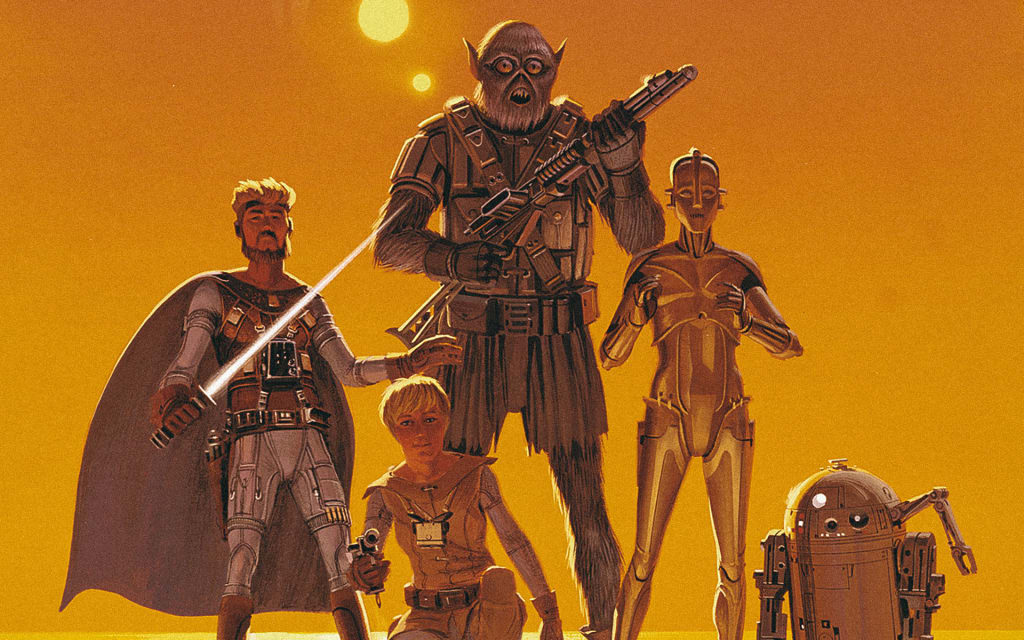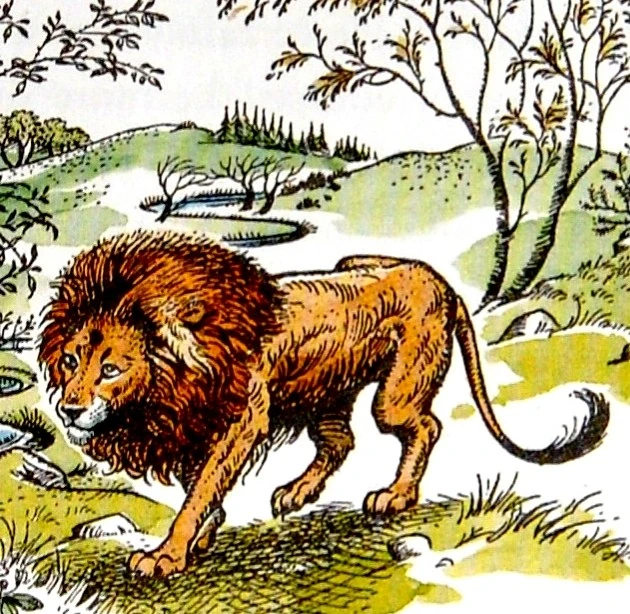SEVEN TIPS FOR THE HEIRS OF THE INKLINGS
There is no shortage on tips
and recommendations for writing stories in the fantasy genre. Anyone who has an
interest in becoming a fantasy storyteller will already be acquainted with the
tons of guides and suggestion lists for crafting good plots, characters and
secondary worlds. Nevertheless, though there is a lot to be gained from these
helps, there is something that is often missing from them.
Most of these list of
recommendations assume from the outset a very superficial outlook on the
fantasy genre. They assume that fantasy is just like any other modern literary
genre, except that it contains dragons, wizards and magic. This way of looking
at fantasy, however, is severely flawed, as we have proven in other articles
(here). It fails to address the deeper layers of meaning that are inherent in
the genre and allow it to be so distinctively fascinating. Therefore, by
adopting a view of fantasy that is awfully superficial, modern guides for writing
fantasy have fostered the identity crisis of the genre despite all the good
technical advice they may provide new storytellers with.
Yet as we saw in a previous
article, this doesn't mean that there is no solution to the identity crisis of
fantasy. If there is one way that the genre can be saved from the depths of
this crisis, it is by returning to the great tradition that gave birth to it,
and that tradition is found in the Inklings.
But alas, if anyone would
desire to follow in the steps of Barfield, Williams, Lewis and Tolkien, he will
be disappointed to find that there are little to no resources that may guide
him through the process. That's the ill this humble article proposes to amend.
In the course of this article, we will provide seven brief suggestions for
those aspiring heirs to the Inlikings tradition. God-willing, by the time
he has finished reading, the reader will have found a light to guide him
through the dark.
1. Familiarize yourself with
myth and fairy tales
If one wants to become like
the Inklings, he must be acquianted with those tales that brought the
Inklings together. This is why fairy tales and myths are a crucial part of
forming oneself as an heir of the Inklings tradition. After all, the club initially
got started as a place to read and enjoy together myths, legends and fairy
tales. Had it not been for the great legends of the noble Hector, the
valiant Gawain and the fierce Beowulf, the Inklings would have likely never had
a reason for knowing each other. In other words, these stories formed
the core of their companionship, so it would certainly be imprudent for anyone
who wants to be an Inkling as well to not become familiarized with them.
2. Make the Transcendent a
central part of your writing and your life
The Inklings were highly
spiritual men. None of them would fit the bill for the modern or postmodern
writers of today, and that is partly what makes them so great. Their insight
into the transcendent side of reality is not only fascinating but also deeply
enriching for their readers. They told stories full of meaning that
brought back Beauty and the Divine to a world that had forgotten these
realities.
Hence, if one is to follow in
the footsteps of the Inklings, he should adopt this transcendent and highly
spiritual worldview in both his work and his personal life. Stories cannot be
about mundane, superficial situations. Rather, they must be about the most
transcendent things in reality, the stuff of epics. But this cannot be
accomplished unless one personally understands the significance that
transcendence has. For this reason, it is crucial that the storyteller
himself, like the Inklings, lives out in his life the spiritual and religious
reality that he depicts in his work. After all, one cannot give what he does
not possess in the first place, and if one wants his work to be transcendent,
it follows that his life should be transcendent as well. It is only be making
spiritual and religious transcendence the center of one's work and life that
one can honor the heritage of the Inklings.
3. Know your culture, love
your culture and write about your culture
When the Inklings wrote their
works, they did not draw their inspiration out of a sheer romantic feeling of
self-expression. On the contrary, their inspiration was anything but emotive
self-expression. Rather, one of their main sources of inspiration was often
their deep and intense love for their culture. We see this Tolkien when he
declares that he intended his Legandarium to be a sort of mythology for English
culture. We see it with Barfield who could have never written a work like Poetic
Diction had he not first fallen in love with the great poetic
traditions of the old world. And lastly, we see it in Lewis whose love for
medieval and ancient cosmology inspired him to write the Space Trilogy. Thus,
it was their knowledge and love for their cultural heritage that inspired the
Inklings to sub-create.
So if one wishes to become an
Inkling, it follows one must do likewise in this sense. Culture and tradition
must be a treasure for us, not old skeletons we lock up in the attic. They must
be the wellspring from which our writing is nurtured. Furthermore, it's also a
great opportunity to make one's writing intensely personal without falling into
the trap of subjectivism. Suppose you are a Catholic of Spanish and Italian
descent who wants to write in this tradition. Learning about your heritage and
traditions as an Italo-Spanish Catholic will not only give you good resources
to base your work on but it will also give your writing a certain flavor that
is distinctly yours. Those are the advantages of following the path of the
Inklings when it comes to culture.
4. Learn your metaphysics and
theology and incorporate it into your writing
Anyone who has read the
Inklings' work will know that their writing is deeply imbued in classical
metaphysical and theological realities. One need only to look at Tolkien's The
Silmarillion, Williams' occult novels and Lewis' last Narnia volume to know
this. You cannot escape the supernatural and preternatural when you venture
into the Inklings because, in many ways, that was and is the foundation of
their work. But in addition to making metaphysics and theology a central aspect
of their writing, these men also knew enough about these complex subjects to
swiftly incorporate many metaphysical and theological into the plots and
characters of their stories. Many examples come to mind: the most prominent
would probably be Eru Illuvatar and his angelic host of Valar and Maiar and Aslan
and his mystical dominion over Creation. Only men educated in the great
philosophical and theological tradition of Christendom would have been able to
accomplish such a feat. Thus, we get the level of depth that all of the
Inklings' work has.
Therefore, if one wishes to
emulate the Inklings in this respect, he must immerse himself in the
metaphysical and theological realities of the world. First, he must educate
himself on the great philosophical and theological tradition of Christendom.
Secondly, he must analyze and plan how he can incorporate metaphysical and
theological elements into his writing in a way that will give a deep
consistency to the whole mythic story. And lastly, he must practice. He must
put pen to paper and try his hand at writing stories that are profoundly
metaphysical and theological. It's a technique that even the most literate of
Christian theologians and philosophers would have some trouble with. Hence, by
learning, thinking and practicing, the aspiring heir to the Inklings will have
had enough training to imbue his tales with as much as metaphysics and theology
as the great masters did.
5. Develop the secondary
world
Developing secondary worlds,
or worldbuilding (as it is today known), was key to the mythic stories of the Inklings.
These secondary worlds had a rich development, which had a good and consistent
metaphysical and theological foundation. Hence, relying on the last suggestion,
the man aspiring to be like the Inklings must work on his transcendent
foundations to build a secondary world that is filled with layers upon layers
of development. In other words, he should not neglect the worldbuilding of the
setting, as some modern fantasy writers do. On the contrary, he must work on it
as much as he works on the characters and on the plot.
6. Practice immersion,
recovery, escape and consolation
As Tolkien explains in his
essay On Fairy Tales, fantasy that immerses the reader in an enchanted
sub-created world exists for the purpose of three things: recovery, escape and consolation.
Let us explain what is meant by these terms. Firstly, recovery is the principle
by which we see mundane, normal things in a refreshing and enchanting light.
Then, escape refers to the escape from the modern world and into a world that
is more real, more magical and sacramental. And lastly, consolation is that
quality of the tale that brings Hope and Joy to the reader. In other words, it
is the quality proper to the eucatastrophe, that is, the good catastrophe. When
all seems lost and dark and it seems that evil and sin will prevail, Hope and
Joy must arrive to save the day and thus give the consolation of the happy
ending. These are, according to the great Inkling tradition, some of the most
fundamental aspects of good fantasy writing. (You can see a more in-depth
explanation of these three aspects of fantasy here)
Hence, it follows that those
who want to take up the mantle from the Inklings must follow Tolkien's
principles and apply them to their writing. Through their immersive stories set
in wonderful secondary worlds, they must achieve the three things at which fantasy
is best. Accomplishing recovery, escape and consolation in the story means true
success.
7. The story must have as its
ultimate end the echoing of the True Myth
All of the Inklings believed
in what they called the True Myth. This is the Myth that came into the Primary
World and united myth with History. This is Christianity. If anything can be
described as the deepest point of connection for the Inklings, it is this.
That was the ultimate end of
all their stories (to echo the True Myth and thus bring people closer to the
Saving Grace of Jesus Christ), and therefore, it should be our ultimate end as
well. We do not familiarize ourselves with myths for nothing; we do not go
to encounter transcendence in our lives for nothing; we do not study metaphysics
and theology for nothing; we do not fall in love with our culture for nothing;
in short, we do not tell stories for nothing. All this we do for ultimately one
purpose: to grow closer to the God that creates us and loves us and to bring
others closer to Him Who is Love Itself. That is why the Inklings wrote what
they wrote in the end, and that should be the reason why we write as well.
Christ is our beginning and our end, our Alpha and Omega, and more so when it
comes to storytelling.












